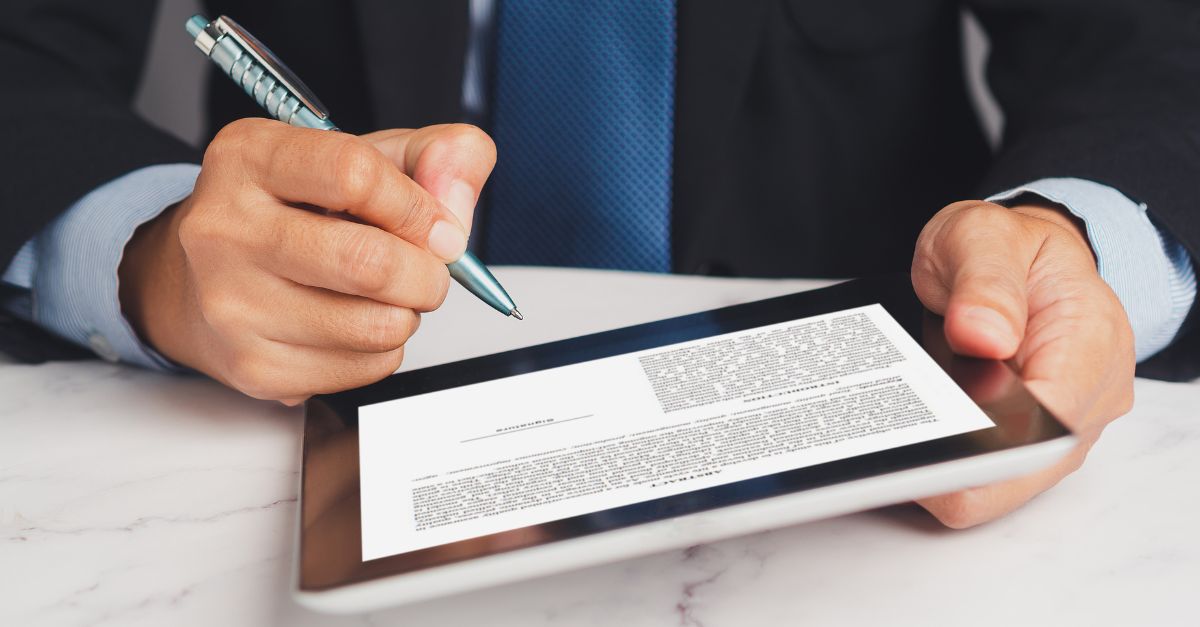The theme for World Earth Day 2023, celebrated on April 22nd, is “Invest in Our Planet” and as reports of the effects of global warming are increasingly shared in the news, there is a heightened urgency to embrace greater sustainability measures and policies on a government, corporate, and personal level.
This growing level of accountability and consciousness, spurred by increased global connections and data sharing enabled by digital communication, is motivating companies to do their part and incorporate sustainability into their business practices. A recent survey run by Boston Consulting Group (BCG) conducted research to assess the level of concern regarding environmental issues. The study found that 87% of survey respondents believe their organizations should do more to build sustainability measures into their operations.
The Environmental Impacts of a Paper-Based Business Model
The pulp and paper industry has made strides in reducing the once staggering amount of water consumption involved in the process. However, the creation of paper products still negatively impacts the environment in a number of ways. Deforestation has long been an issue, with approximately 200 million trees cut down daily to make paper and an estimated 28 million metric tons of carbon dioxide released into the atmosphere per year as a result. The greenhouse gases, carbon dioxide and methane, are at the core of our escalating global warming.
As organizations ponder their carbon footprint, many need help to make those impactful first steps. In light of this era of continued digital transformation, one obvious and fairly easy answer is to embrace digital and reduce paper for transactions.
Digital Signatures Amplify the Benefits of Going Paperless
Imagine a typical business and the magnitude of infrastructure and time entailed in paper-based processes. From internal operations to external services and transactions, mountains of paperwork are involved. File cabinets, fax and scanning machines, copiers, storage for archives, etc., all require space, cost, and time management. Signing documents, depending upon their volume, requires patience and the physical presence of invested parties, as well as certified notaries in many cases.
Human error can compound the inconvenience if documents are not signed properly or securely, are misplaced, or fail to be signed within the specified timeline. By eliminating the paper trail with secure digital signatures, there are significant savings in time, security, money, and employee productivity.
Find out more about digital signatures
Automated digital signature solutions can archive all e-signed documents for a company in a digital repository. Businesses are no longer tied to printing out signed copies and finding a physical storage system. Not only does this save in paper consumption, but in all related steps like hard copy archives, copying, mailing, and climate-controlled storage equipment. That money can now go back into the business for more critical initiatives.
Digital Signature Solutions Boost Business Operations While Lowering the Carbon Footprint
In addition to embracing and promoting green initiatives, the transition to digital signature solutions provides significant advantages for ensuring message integrity from originator to recipient, as well as authentication of originator and signees. Whether B2B, B2C, or B2E transactions, automated digital signatures can accelerate transactions, increase security and accuracy, and provide seamless interactions no matter how remote.
Myriad business interactions that once took multiple days and steps to complete can be accomplished within minutes. All departments within an organization can benefit from replacing slow, paper-based workflows to save costs, shorten timelines for projects, and ensure integrity and compliance for all documents.
GlobalSign’s Industry Leading Digital Signing Service
GlobalSign is fully equipped to assist organizations of any size in their quest to transition to a more environmentally conscious, paperless profile. GlobalSign has developed the product knowledge and industry expertise that has helped companies adopt digital signatures and seals for over ten years. As the first digital signing solution on the market to include all supporting crypto components, including the full AATL trusted certificate chain, time-stamping response, and OCSP checks, in one API call, we make sure you get the solution you need.
Click here to learn more about how GlobalSign’s cloud-based Digital Signing Service can promote your organization’s sustainability goals while streamlining workflows and lowering costs.







